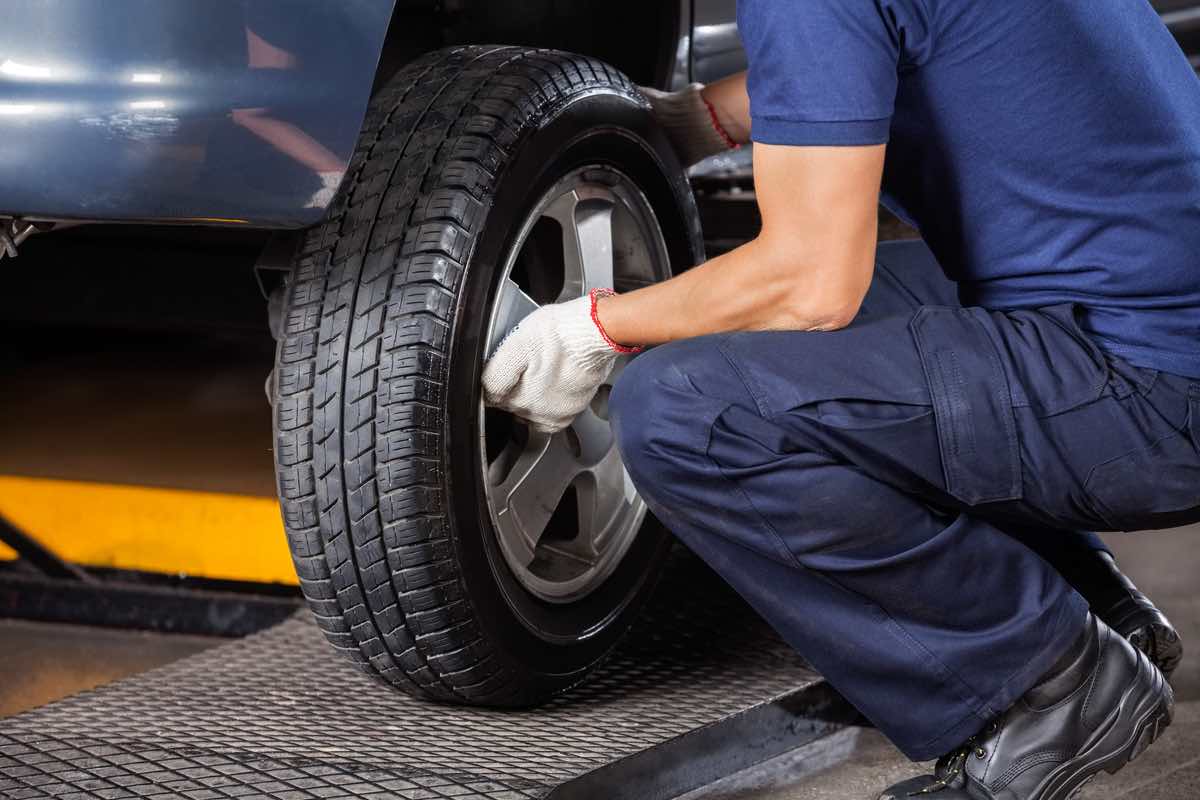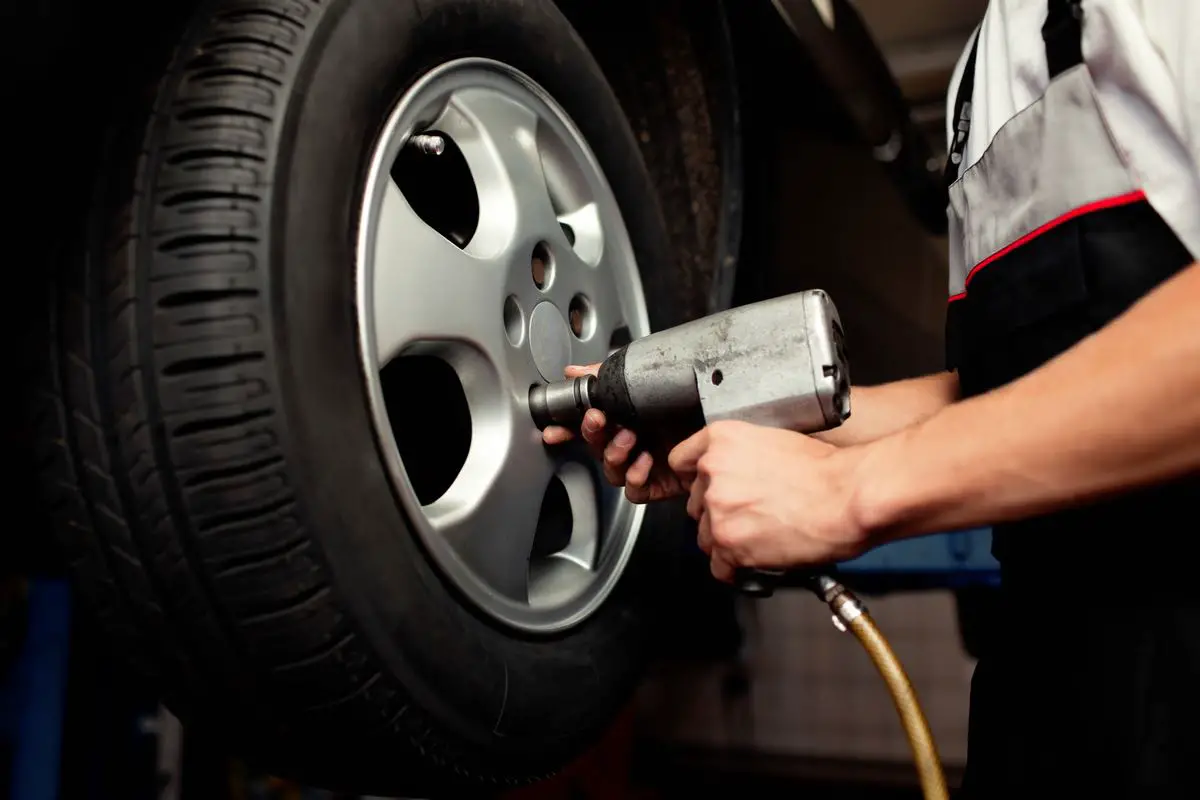When you switch from factory tires to larger ones, do you need to regear your vehicle? Whether you have a Jeep or a 4×4 truck, changing the tires can require a new gear ratio. Here are some factors that affect whether you need to regear or not.
You don’t need to regear a 4×4 with a change to 35-inch (887 mm) tires. However, the gear ratio is targeted to the tire size you get with your vehicle from the manufacturer. Most people would agree that changing the gear ratio to reflect the tire size has significant benefits.
You can drive your 4×4 with larger tires and the original gear ratio, but you will lose some essential vehicle features. Keep reading to see how gear ratios match tire sizes and why you should consider adjusting the gear ratio with larger tires to keep power and fuel economy for your vehicle.

How Changing Tire Size Affects the Gear Ratios
A gear ratio refers to the process of the wheels of your vehicle turning. Because the wheels are connected to other mechanical parts, when the wheels turn, these parts turn, too. The turning ratio must remain consistent for a vehicle to drive well and run correctly.
Changing the vehicle tires from the factory tires can force a ratio change called regearing. In the manufacturing process, the automotive engineers calculate the perfect gear ratio for that vehicle based on the matching tire size. Any changes can cause other mechanical parts not to work correctly, possibly damaging the engine and other vehicle parts.
Changing From Stock to Larger Tires
If you choose to remove the stock tires from your 4×4 and replace them with 35-inch (889 mm) tires, you might need to adjust the gear ratios. Larger tires look great, but they reduce vehicle power. One way to address the loss of power is to change the gear ratio.
Here is an example:
If your vehicle comes with 31-inch (787 mm) tires and you switch to 35-inch (889 mm) tires, the gear ratio would look like this.
- A 31-inch (787 mm) gear ratio is 3.73:1. For each wheel turn, the gear drive shaft turns 3.73 times.
- A 35-inch (889 mm) gear ratio is 4.56:1. For each wheel turn, the gear drive shaft turns 4.56 times.
How Adjusting the Gear Ratio Affects Vehicle Performance
As I have mentioned, the wrong gear ratio affects vehicle performance. The incorrect gear ratio can lower fuel economy and cause your vehicle to lose power. The loss of power can feel significant in large trucks and other 4×4 vehicles.
Changing the gear ratio to match the tire size improves several features of your vehicle.
- Fuel efficiency decreases when the tire size does not match the gear ratio. When you drive your vehicle on the highway, this can make a noticeable difference. Adjusting the gear ratio gives better fuel efficiency.
- Gear ratios affect the power of the vehicle. When you change from the factory tire size to a larger tire, you will lose power. To compensate for that, when you are off-roading or need more power, adjusting the gear ratio will return most, if not all, of the power to your vehicle.
- There is a difference between everyday driving and off-road driving. You want the best fuel efficiency for daily driving and added power for off-road driving. The correct gear ratio gives you both.
Can You Drive Your 4×4 with the Old Gear Ratio?
You can drive your 4×4 with the old gear ratio. You will lose some power and fuel economy, but if those are not a concern, many 4×4 owners say their vehicle runs fine with 35-inch (889 mm) tires and the unadjusted gear ratio.
You have to understand the vehicle won’t be as powerful as it was, but it will still operate well. Changing from 31-inch (787 mm) tires will cause a seventeen percent power loss; otherwise, it won’t harm your vehicle.
Since the factory gear ratio does not coordinate with the larger tires, you might notice the transmission working harder to find the gears. Keeping a low or high gear for too long can create more wear and tear than normal on the transmission. However, do 35-inch tires ruin the transmission? Click on the link to find out the answer. [Will 35 Inch tires Ruin a Transmission?]
Benefits of Adjusting the Gear Ratio After a Tire Change
When you replace the stock tires with larger tires (and frequently a lift kit), there are some clear benefits to adjusting to a new gear ratio. While most say you can stay with the same proportion, those who invest in a new gear ratio say the cost is worth the benefits. Here are some ways a regear will impact your driving.
- When you regear a 4×4 creates a smooth balance of acceleration, fuel consumption, and highway cruising speed. Remember, the factory sets the gear ratio to the tire size for maximum fuel economy and power.
- When you add a lift kit, larger tires, and a bigger bumper to compensate for the larger tires, the weight of the vehicle increases. This affects the aerodynamic drag and rotational mass, slowing the vehicle down.
- Adjusting the gear ratio to the new tire size stops the vehicle from hunting for the right gear to maintain speed. Most 4×4 vehicles are geared low already, and the proper gear ratio keeps the transmission from overworking.
- The right gear ratio reduces unnecessary wear and tear on the engine and drive train components. This keeps the energy and performance in sync.
- The adjusted gear ratio improves wheel torque. When you take off, you need more torque, but at higher speeds, you need more power.

Conclusion
Car and truck designers and manufacturers assign a gear ratio to a tire size for specific reasons. While you can drive a 4×4 with the original gear ratio for the tires that came with the vehicle, you will lose some crucial features, so it is sometimes better to regear.
Gear ratios affect fuel economy, tire torque, and power at high speeds. The best course is to adjust the gear ratio to match the 35-inch (887 mm) tires so you retain those features when you drive. Otherwise, you can notice increased fuel consumption and lower performance.
Sources
- How Stuff Works: How Gear Ratios Work
- Four Wheel Trends: What Size Are Stock Jeep Wrangler Wheels?
- Bushwhacker: Gear Ratio Chart
- Expedition Portal: Understanding Gearing And Why You Want To Re-gear
- F150forum: 3.73 gears OK with 35″ tires?
- AZ Driveshaft: Gear Ratio Changes
- MotorTrend: Why Change Gear Ratios?
